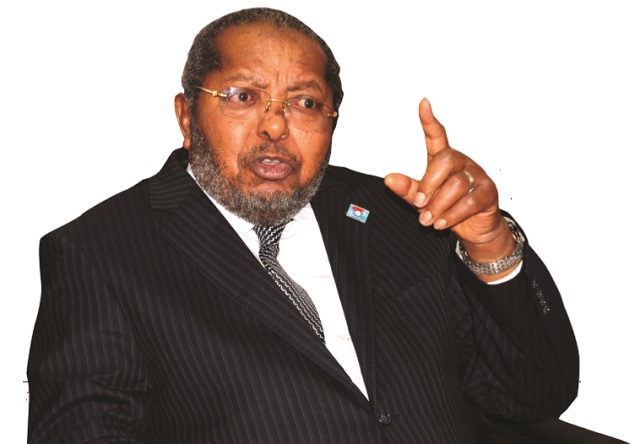
Says revamping the economy will depend on government spending
Kampala, Uganda | Julius Businge | The Central Bank has once again lowered its indicative lending rate, the Central Bank Rate, in a bid to push commercial bank rates down and spur private sector borrowing in the next three months. However, according to the bank, the monetary policy move needs to be matched by appropriate government spending if the shaky economy is to see any meaningful growth in the new fiscal year that starts this July.
Central Bank Governor Emmanuel Tumusiime Mutebile on June 19 announced a one percentage point reduction of the CBR to 10% in June as one measure to revamp the economy.
In a statement, BoU said the decision was taken because “with domestic inflationary pressure remaining subdued and given the continued weak growth prospects, the BoU judges that the continued easing of monetary policy is appropriate. This will be consistent with achieving the core inflation target of 5 percent in the medium-term and will also support the recovery of real output in the economy”.
In an interview, the BoU Director of Reasearch, Adam Mugume, said the performance of monetary policy will depend on the government’s will to implement development programmes.
He emphasised that BoU’s monetary policy looks at the demand side of the economy or controlling money in circulation, while government manages the supply side or fiscal policy involving spending of money.
“When you talk about enhancing productivity, infrastructure, supplying seedlings etc…that is supply side and it drives output,” he said, “That is work of government and it depends on what it does and not what the central bank does.”
Lowering the CBR, which was introduced sometime in 2011 to fight inflation that once touched the highs of 30%, has managed to somewhat bring down interest rates to around 20.5% as of April 2017 from close to 30% recorded in 2011 and 2012. The policy rate has also controlled inflation at below 10% for most parts of six years since it was introduced. Movements in inflation and interest rates partly determine how well or badly an economy performs.
Currently, inflation figures from the Uganda Bureau of Statistics indicate that year-on-year, headline inflation went up from 6.8% in April 2017 to 7.2% in May 2017 largely driven by agriculture prices that were spiked by drought in the previous two seasons.
According to the BoU June Monetary Policy Statement, it is estimated that Gross Domestic Product will grow at 3.9% this financial year down from 4.7% growth rate of FY2015/2016 and 5.5% projections (for FY2016/17) largely because of the drought.
But Finance Minister Matia Kasaija, while presenting the 2017/18 budget on June 8 insisted that government would fight corruption, improve funds absorption capacity, monitor government programmes, revamp agriculture and provide long term capital to the private sector as his fiscal stance to revamp economic growth and usher in middle income status by 2020.
Some analysts have criticised the budget saying it wrongly targets long term growth by making huge development expenditures at the expense of short term growth. They say the long-term emphasis threatens the success of short term policies such as those being pushed by the central bank.
Martin Okumu, a director at Uganda National Chamber of Commerce and Industry (UNCCI), says BoU’s reduction in the CBR is the right move but it must be marked by short-term spending to spur economic growth. He said that reducing the CBR will not achieve results in a country where there is talk about ‘system failure’ and added that the government does not have capacity to implement such projects.
“We have a budget that has a growth strategy that is well elaborated; what we don’t have is actual implementation of what is in that budget,” Okumu told The Independent on June 19 in an interview. He said most local governments do not have technical staff to implement infrastructure and other policies in agriculture that the government talks about in the budget.
Okumu, who worked in the office of the Inspector General of Government, added that corruption is one core area that government has failed to tackle that is stifling economic growth.
****
 The Independent Uganda: You get the Truth we Pay the Price
The Independent Uganda: You get the Truth we Pay the Price




Most Ugandans seeking loans will only greatly appreciate if the reduction of the Central Banking Rate is immediately followed by reductions in interest rates by all commercial banks. In the current state, reduction of the CBR remains a rhetoric; by the time commercial banks think of lowering their interest rates, the CBR may even be raised higher.
In my honest view, Bank of Uganda as a financial regulator with support from the executive and the legislative arms of government need to create obligatory measures that tag the interest rates by commercial banks to certain points above the CBR.
I agree with you Kato. In Kenya, they did it. It is working. It can work here as longer as we are willing and able to effectively implement such a law.
In Kenya the interest rate cap was instituted by a law (Banking ammendment Act 2015) passed by parliament & assented to by the Executive, rather than the central bank of Kenya.
https://management-africa.co.ke/interest-rate-capping-will-work-kenya/
So the Uganda parlimentarians have some homework to do by analysing the pros & cons… Eventually supporting their views. Also one can compare with other jurisdictions like the US as seen from the links below.
http://www.usurylaw.com/state/newyork.php
http://caselaw.findlaw.com/us-supreme-court/439/299.html
That approach stands a better chance.